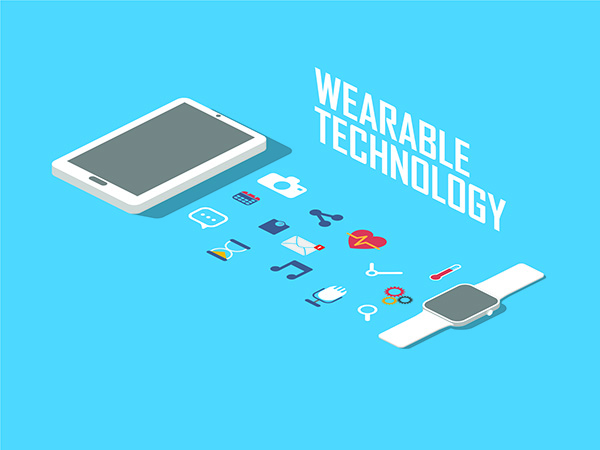Embrace the end-user
As well as creating a device with beautiful design and great features you need to think about how to make it as easy to use and connect as possible. To help choose the best solution, you need to think about a few key questions:
What kind of wearable are you creating? It could be an earpiece, jewelry like a wristband or watch, or even some sort of clothing. The challenges posed by different types of wearable will need different solutions.
Is the end-user going to wear the device all day every day, or just occasionally? A watch or wristband will likely be worn day and night, but a jacket will probably only be worn when the user is out and about. Wearables for sports may be used for just a few hours a week or less.
How much data will the device need to exchange with the phone and how often? An earpiece will need to transfer lots of data to and from the phone constantly. A fitness tracker will only need to upload small amounts of data every so often.
Choosing a solution
How does the usage of the device dictate the choice of technology? It all comes down to bandwidth:
- High bandwidth
If your wearable device needs to transfer lots of data frequently, your best option is Bluetooth Classic or Wi-Fi. These technologies are great for streaming huge amounts of data, like audio and video.
The biggest drawback is increased power consumption. The batteries on devices using these technologies will need to be charged daily, or maybe even more often.
- Low bandwidth
If your wearable device only needs to transfer small amounts of data, the best solution is Bluetooth low energy. This technology was developed specifically for low power, low bandwidth applications and is the best choice for connecting most wearables to smartphones today.
Most wearables don’t transfer a lot of data, so there’s a good chance that your device will fit into this category. If you know that your device only needs to transfer small amounts of data every so often then Bluetooth low energy is by far the best solution.
Bluetooth low energy comes with huge advantages
Choosing the small-size, low-power Bluetooth low energy chip for your wearable device has many benefits.
You can create devices that connect simply, contain smaller batteries and need to be charged less often, saving the user a lot of time, effort and frustration.
You have much greater flexibility in the product design, allowing you to make great looking devices that are comfortable and convenient to wear. This makes your products much more attractive to the user, increasing both sales and usage.
You can also put your application software right on the same chip, and tweak it on demand when needed. As you can update software over the air, you can add patches and bug-fixes on the fly. You can even add more value to a user’s product after it’s in their hands. By adding new features, or unlocking features if they choose to upgrade later on, you can greatly enhance the user experience.
The advantages of Bluetooth low energy for your wearable device:
- Longer lasting battery
- Low power usage
- Simple implementation, much easier than Wi-Fi
- Tweakable all-in-one solution
- Smaller physical size
- Lower cost
Bluetooth low energy is a technology that is still improving and in the future might even be suitable for more demanding devices as well.
Bluetooth low energy makes you more competitive
If all of this still hasn’t convinced you that Bluetooth low energy is the best solution for your wearable device, there’s still one more major advantage. Because you can update the product over the air, you will never have to recall your product and refund buyers because of issues that were discovered after it went to market. This means you can run operations with significantly less risk, and you'll be able to enter and adapt to changes in the market more quickly, before the competition leaves you behind.
In the fast-moving world of tech, Bluetooth low energy will help make sure you don’t miss the train.
